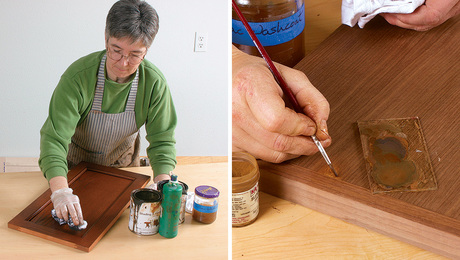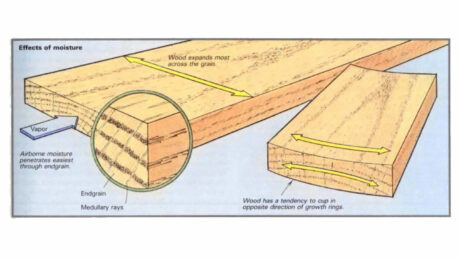Finishing issues in woodworking
Your shop and your high school chemistry class are more alike than you'd think.
I was asked to write about issues I face as a woodworker in restoration and conservation. Outside of structural repairs, one of the most frequent problems the shop deals with are unstable finishes or multiple layers of finish that react with one another.
Trends in finishing through the years
In a perfect world, addressing failing layered finishes would start first with knowing what they are. However, many wooden objects have passed through generations or families a few times. Often, each of those owners employed the best ideas of their time. In the 1980s, linseed oil was used frequently used to regenerate failing finishes. Because linseed oil reacts with everything in the environment, the regret of this practice is recorded throughout conservation literature. Wax finishes made with paraffin oil are a common 20th-century additive. That paraffin oil can cause problems because it is a non-drying oil. I find toners and glazes commonly wiped on pieces that quickly turn a clear tabletop to a murky mess.
Chemistry and woodworking?
In high school, chemistry was not my strongest subject. I was suspended because the teacher heard my poorly placed joke as a bomb threat. I wish she could see me now, because chemistry and materials science topics are central to daily discussions in our woodshop.
Chemistry will define why finishes succeed or fail. It’s the study of the materials we work with. It’s why oily rags spontaneously combust, why things cure, why blushing happens. It’s the reason linseed oil is not considered stable as a furniture finish, nor are many of the oils frequently included in oil and wax blends. Chemistry is why bleaches and acids cause wood fibers to lose their color. It is a definitive change in the metal content of the wood fibers. Trees are already crazy and amazing and then we add stains and finishes, which themselves are also crazy and amazing. These interact with the extractive and metabolite content in the wood, a product of the tree’s life as a vascular plant structure. Sometimes they work, sometimes they don’t.

The secret lies in science
Many myths exist around finishing practices. I hope we can let go of the idea that “things were just done this way” because very often, they weren’t. As a new generation of woodworkers gets excited about the availability of information on the internet, we can take advantage of the science! It might not be the most popular topic of conversation in wood shops but it is integral to the success of long-lasting finishes.
I recently taught a class at the Austin School of Furniture on finishes in woodworking. I want to thank them for being such a fun group of excited students. They did exactly what restorers and conservators hope for – they asked a ton of questions. Some of those questions will be expanded here on the FW blog in a short series on chemistry of finishing.
 |
Finishes: Our favorite articles |
 |
10 Best Fixes for Finishing Mistakes |
 |
From the archive: Protecting wood from humidity |



















Comments
I’m excited for this!
Log in or create an account to post a comment.
Sign up Log in